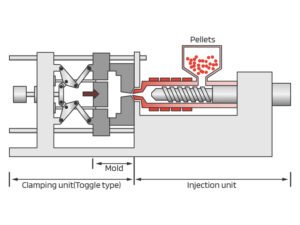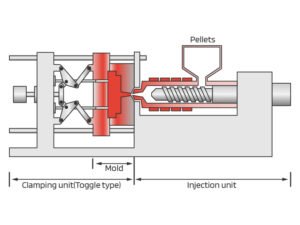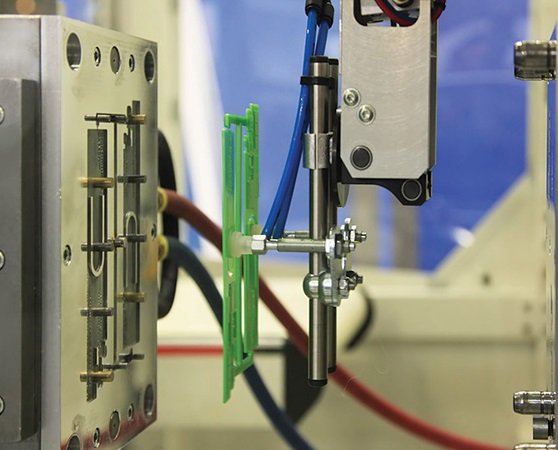Injection molding is a highly versatile manufacturing process widely used to produce complex plastic parts in various sizes and applications. This article provides a clear, step-by-step overview of the injection molding process, highlighting the four main stages: clamping, injection, cooling and solidification, and ejection.
Clamping
The first stage in the injection molding process is clamping, where the two halves of the mold are securely closed and held together by the clamping unit. One half of the mold is fixed to the injection molding machine, while the other half can slide to close the mold. As the clamping unit pushes the halves together, it ensures they are tightly sealed to prevent any leakage during the injection of molten plastic.

Injection
Once the mold is securely clamped, the injection phase begins. Plastic pellets or granules are fed into a hopper and then melted into a viscous liquid inside the heated barrel of the injection molding machine. A screw or hydraulic ram injects this molten plastic into the mold cavity at high pressure and speed. Injection continues until approximately 95% to 99% of the mold is filled.
This injection molding step must be precisely controlled in terms of temperature, pressure, and injection speed to ensure the mold fills completely and uniformly. Injection pressures typically range from 35 to 140 MPa. The rate of injection and the pressure achieved are precisely controlled by the machine’s hydraulic system, ensuring consistent filling and optimal part quality.

Cooling and Solidification
After the mold cavity is filled with molten plastic, the cooling and solidification stage begins. The plastic inside the mold gradually cools down and solidifies into the shape of the cavity.

Cooling time varies depending on the material used, wall thickness, and mold design. Cooling channels within the mold help regulate temperature and minimize internal stresses that could cause warping or defects.
Ejection
The final stage in the injection molding steps is ejection, where the mold opens, and the solidified part is removed from the cavity. Ejector pins, plates, or air blasts are used to push the part out gently without causing damage or deformation.

The ejection system must be well-designed to ensure smooth removal and minimize cycle time. This stage completes the injection molding process step by step, preparing the mold for the next production cycle.
Cooperating Injection Molding with Zhongde
In summary, the injection molding process involves four key steps: clamping, injection, cooling and solidification, and ejection. Each stage plays a vital role in producing high-quality plastic parts efficiently and consistently. As a leading provider of plastic injection molding services, Zhongde leverages advanced technology and expertise to deliver precise, cost-effective solutions tailored to your needs. Welcome to contact our experters for your project.



